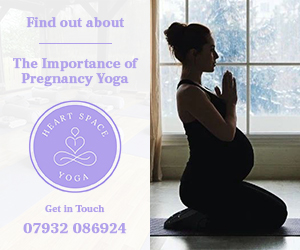01/04/2008
Rising Birth Rate Should Halt School Closures
A leading academic has warned that the current process of closing or amalgamating schools due to falling rolls isn't taking account of overall trends.
Professor Bob Osborne, Director of the Social and Policy Research Institute at the University of Ulster, said: "Now that the birth rates have gone up there is a big worry that we don't have enough services for the community as many schools have been merged or closed, like those in the Lagan Valley, following the dip we had in birth rates.
"The Department of Education was initially slow in getting rid of school places and it is happening now just as there has been a demographic shift and we now need all the schools and maternity units."
However, a Department of Education spokesman said: "We are aware of the recent trends and these are factored into forecasts."
The new statistics actually show that Northern Ireland's birth rate is the highest in the British Isles.
The rate has increased for the fifth year in a row and for the first time in over a decade women are giving birth to an average of two children, according to the latest figures.
However, the rate still falls short of the so-called replacement level of 2.1 children, which in the absence of immigration is needed to maintain a population size.
The findings show that more women in their 30s are giving birth and there has been an increase in the number of women who have moved to Northern Ireland to have children.
Another growing trend is for women to wait longer to have children as half of all the births registered in 2007 were to mothers aged over 30.
Some 20 years ago the average age of first-time mothers was 24 compared to 27 now, according to the Northern Ireland Statistics and Research Agency.
It is therefore estimated that with the current 2007 pattern of fertility the average woman will have a rather odd figure of 2.01 children in her lifetime.
Birth number-crunching aside, this is still an increase of 4% on the 2006 figure (1.94) and a 15% recovery from a record low of 1.75 children in 2000, but still well below the recent highest level of 2.82 children in 1979. The overall pattern for 2006 was: 1.94 Northern Ireland; 1.86 for England and Wales; 1.90 for the Republic; and 1.67 for Scotland.
Last year 24,000 births were recorded – 12,316 boys and 11,935 girls – with 38 per cent of them outside marriage. Belfast at 56% and Derry City Council at 51% were among the highest.
Significantly 1,900 new mothers now resident in Northern Ireland – approaching a tenth of the total – were born outside Britain and Ireland. About 800 of them belonged to young women from countries in central and eastern Europe.
The Northern Ireland Statistics and Research Agency's Dr David Marshall said: "Northern Ireland's fertility rate is the highest in the Britain Isles – including England, Scotland and Wales. The reasons may be historical influence and the importance of family structures. We project that the birth rate will stay around two children."
Mr Marshall added: "Without further immigration, if the birth rate continues as it is at present, beneath the 2.1 replacement level, then the population of Northern Ireland eventually will start to fall. However, this is not an issue solely relating to Northern Ireland – it relates equally to the rest of the UK and indeed the rest of western Europe."
(BMcC)
Professor Bob Osborne, Director of the Social and Policy Research Institute at the University of Ulster, said: "Now that the birth rates have gone up there is a big worry that we don't have enough services for the community as many schools have been merged or closed, like those in the Lagan Valley, following the dip we had in birth rates.
"The Department of Education was initially slow in getting rid of school places and it is happening now just as there has been a demographic shift and we now need all the schools and maternity units."
However, a Department of Education spokesman said: "We are aware of the recent trends and these are factored into forecasts."
The new statistics actually show that Northern Ireland's birth rate is the highest in the British Isles.
The rate has increased for the fifth year in a row and for the first time in over a decade women are giving birth to an average of two children, according to the latest figures.
However, the rate still falls short of the so-called replacement level of 2.1 children, which in the absence of immigration is needed to maintain a population size.
The findings show that more women in their 30s are giving birth and there has been an increase in the number of women who have moved to Northern Ireland to have children.
Another growing trend is for women to wait longer to have children as half of all the births registered in 2007 were to mothers aged over 30.
Some 20 years ago the average age of first-time mothers was 24 compared to 27 now, according to the Northern Ireland Statistics and Research Agency.
It is therefore estimated that with the current 2007 pattern of fertility the average woman will have a rather odd figure of 2.01 children in her lifetime.
Birth number-crunching aside, this is still an increase of 4% on the 2006 figure (1.94) and a 15% recovery from a record low of 1.75 children in 2000, but still well below the recent highest level of 2.82 children in 1979. The overall pattern for 2006 was: 1.94 Northern Ireland; 1.86 for England and Wales; 1.90 for the Republic; and 1.67 for Scotland.
Last year 24,000 births were recorded – 12,316 boys and 11,935 girls – with 38 per cent of them outside marriage. Belfast at 56% and Derry City Council at 51% were among the highest.
Significantly 1,900 new mothers now resident in Northern Ireland – approaching a tenth of the total – were born outside Britain and Ireland. About 800 of them belonged to young women from countries in central and eastern Europe.
The Northern Ireland Statistics and Research Agency's Dr David Marshall said: "Northern Ireland's fertility rate is the highest in the Britain Isles – including England, Scotland and Wales. The reasons may be historical influence and the importance of family structures. We project that the birth rate will stay around two children."
Mr Marshall added: "Without further immigration, if the birth rate continues as it is at present, beneath the 2.1 replacement level, then the population of Northern Ireland eventually will start to fall. However, this is not an issue solely relating to Northern Ireland – it relates equally to the rest of the UK and indeed the rest of western Europe."
(BMcC)
Related Northern Ireland News Stories
Click here for the latest headlines.
04 February 2009
Maternity Care 'Crisis' Alert In Craiavon
There are opposing views today on the extent of a 'crisis' facing Craigavon Area Hospital's maternity unit. Almost a year after the issue was last raised, the midwifery professional body, the Royal College of Midwives (RCM), is again at odds with the officials on staffing levels in the top Co Armagh hospital.
Maternity Care 'Crisis' Alert In Craiavon
There are opposing views today on the extent of a 'crisis' facing Craigavon Area Hospital's maternity unit. Almost a year after the issue was last raised, the midwifery professional body, the Royal College of Midwives (RCM), is again at odds with the officials on staffing levels in the top Co Armagh hospital.
05 September 2008
Maternity Plans Conceived
Key proposals for an expansion of maternity services at Craigavon Area Hospital have been announced. NI Health Minister Michael McGimpsey revealed his plans to develop maternity services in the Southern Trust area overall, which will allow for hundreds of additional births every year at Craigavon.
Maternity Plans Conceived
Key proposals for an expansion of maternity services at Craigavon Area Hospital have been announced. NI Health Minister Michael McGimpsey revealed his plans to develop maternity services in the Southern Trust area overall, which will allow for hundreds of additional births every year at Craigavon.
24 January 2014
Warning To Pregnant Women During Lambing
The Department of Health and the Department of Agriculture have released a warning along with the Health and Safety Executive for Northern Ireland that pregnant women who come into close contact with sheep during lambing may risk their own health, and that of their unborn child.
Warning To Pregnant Women During Lambing
The Department of Health and the Department of Agriculture have released a warning along with the Health and Safety Executive for Northern Ireland that pregnant women who come into close contact with sheep during lambing may risk their own health, and that of their unborn child.
28 July 2010
Ireland Has Highest EU Birth Rate
With the news that the EU population has surpassed 501 million, it has been revealed that the Irish Republic boasts the highest birth rate in the Union. Ireland recorded the highest natural growth in population among member states along with the lowest death rates.
Ireland Has Highest EU Birth Rate
With the news that the EU population has surpassed 501 million, it has been revealed that the Irish Republic boasts the highest birth rate in the Union. Ireland recorded the highest natural growth in population among member states along with the lowest death rates.
26 April 2005
Research to examine dental health and premature births
An investigation into a possible link between gum disease in pregnant women and their chances of having a premature or low birthweight baby is to be carried out by dental researchers at Queen's University.
Research to examine dental health and premature births
An investigation into a possible link between gum disease in pregnant women and their chances of having a premature or low birthweight baby is to be carried out by dental researchers at Queen's University.
-




 Northern Ireland WeatherToday:A sunny but frosty start for many. However cloud increases by midday with a few showers reaching the north coast, these mostly light but spreading inland this afternoon. Chilly. Maximum temperature 8 °C.Tonight:A rather cloudy evening with scattered showers. Becoming drier through the night with some good clear spells developing and a patchy frost away from coasts. Minimum temperature 0 °C.
Northern Ireland WeatherToday:A sunny but frosty start for many. However cloud increases by midday with a few showers reaching the north coast, these mostly light but spreading inland this afternoon. Chilly. Maximum temperature 8 °C.Tonight:A rather cloudy evening with scattered showers. Becoming drier through the night with some good clear spells developing and a patchy frost away from coasts. Minimum temperature 0 °C.

